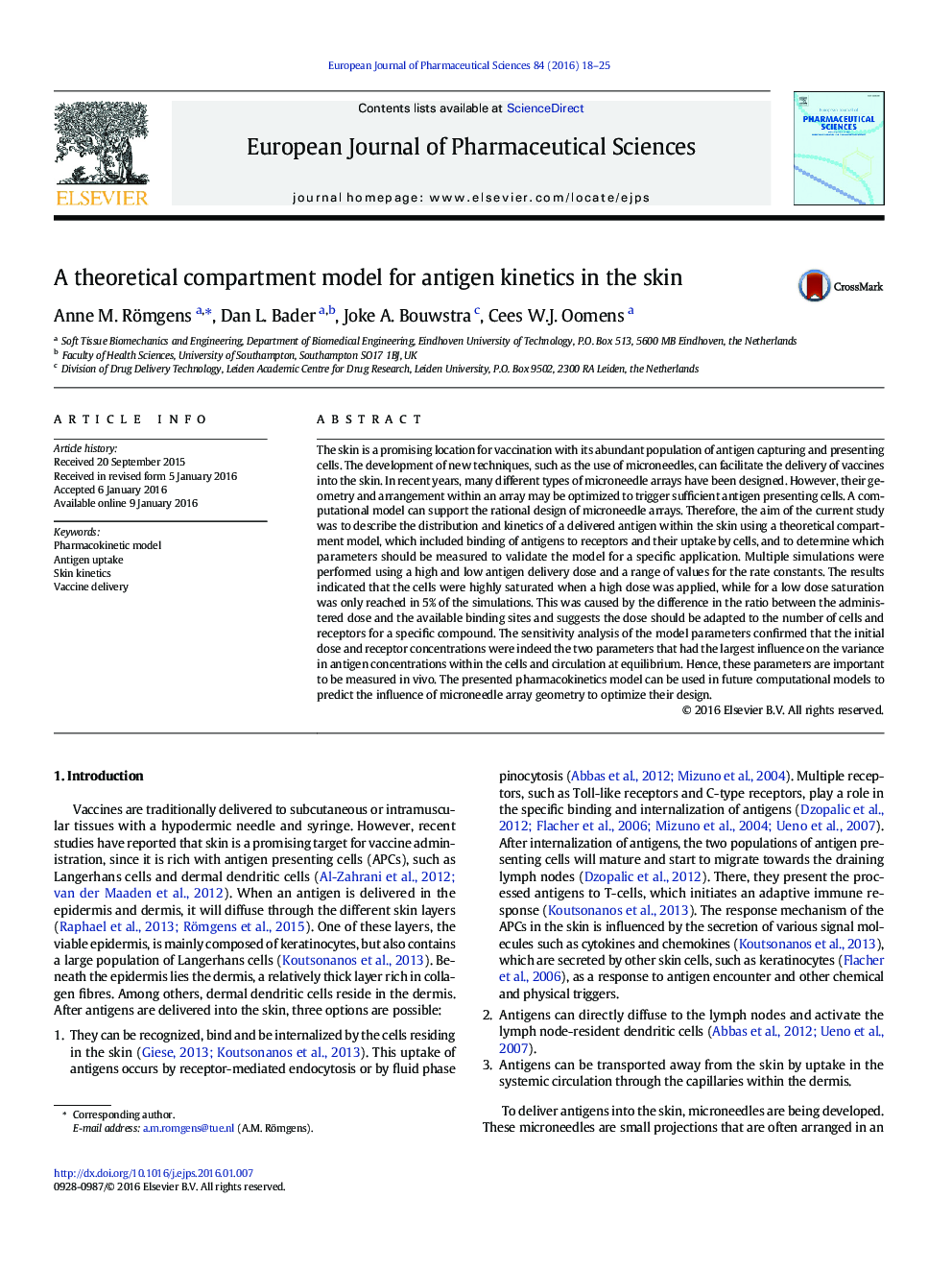| Article ID | Journal | Published Year | Pages | File Type |
|---|---|---|---|---|
| 2480107 | European Journal of Pharmaceutical Sciences | 2016 | 8 Pages |
The skin is a promising location for vaccination with its abundant population of antigen capturing and presenting cells. The development of new techniques, such as the use of microneedles, can facilitate the delivery of vaccines into the skin. In recent years, many different types of microneedle arrays have been designed. However, their geometry and arrangement within an array may be optimized to trigger sufficient antigen presenting cells. A computational model can support the rational design of microneedle arrays. Therefore, the aim of the current study was to describe the distribution and kinetics of a delivered antigen within the skin using a theoretical compartment model, which included binding of antigens to receptors and their uptake by cells, and to determine which parameters should be measured to validate the model for a specific application. Multiple simulations were performed using a high and low antigen delivery dose and a range of values for the rate constants. The results indicated that the cells were highly saturated when a high dose was applied, while for a low dose saturation was only reached in 5% of the simulations. This was caused by the difference in the ratio between the administered dose and the available binding sites and suggests the dose should be adapted to the number of cells and receptors for a specific compound. The sensitivity analysis of the model parameters confirmed that the initial dose and receptor concentrations were indeed the two parameters that had the largest influence on the variance in antigen concentrations within the cells and circulation at equilibrium. Hence, these parameters are important to be measured in vivo. The presented pharmacokinetics model can be used in future computational models to predict the influence of microneedle array geometry to optimize their design.
Graphical AbstractFigure optionsDownload full-size imageDownload high-quality image (187 K)Download as PowerPoint slide
